Not only its ability to ensure the harvest of the next year, but also the good health of the bush itself depends on the timely and high-quality preparation of the vine for the cold season. Grape care in the fall, winter pruningsoil cultivation and mulching, fertilizer application and sheltering shoots ensure plant survival. This is especially true for the harsh climatic conditions of Russia.
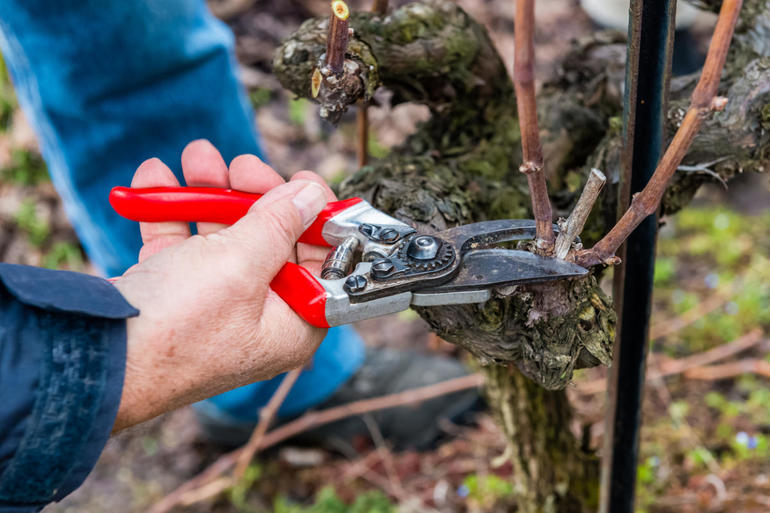
Content
Trimming Secrets
Scientists believe that the vine is able to live a thousand years. For example, before the struggle against viticulture on the Don, carried out in the 80s of the 20th century, some representatives of autochthonous varieties reached eight hundred years of age. The oldest plant to date lives in Slovenia, it was planted in 1548. The oldest vineyard in operation today is located in Austria and was founded in 1847. One of the secrets of such longevity is the ability to care for grapes in autumn and spring.
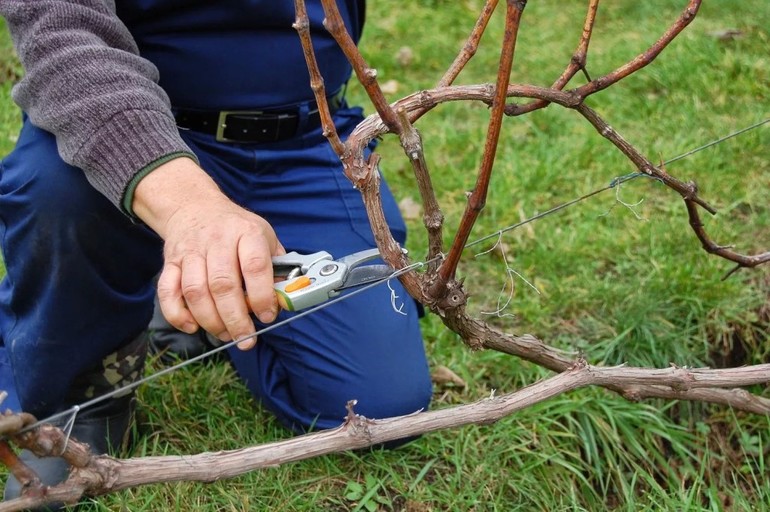
Gardener before winter you need to have time do a lot of things. One of the most important and complex is the pruning of grapes. It is produced after the first autumn frost, when the leaves fall off. A more accurate time is determined by touch. Usually the top of the vine is wet and very cold. Feeling it towards the base, you need to find the site from which the dry and warm part begins. At this point, carefully trim the secateurs.
 You may be interested in:
You may be interested in:If you leave a damp (dead) vine, then with an increase in spring temperature, it will grow moldy. A fungal infection can spread to the entire shoot, which will die. The living, lignified part of the vine (warm and dry) will continue the vegetation next year. Its suitability can be checked at the fold: the branch should clearly crunch. Beginning gardeners should pay attention to the color of the stem core: you need to cut it until it turns green instead of white.
Age difference
In the first three years of life, the basic form of the vine is laid, and each fall it is pruned in different ways. This is a general rule, independent of the variety or place of growth. Do not wait until the bush grows - this approach does not add beauty and productivity. From the shoots of a young bush, you need to choose the two most powerful shoots to create sleeves, cut off the rest. One will become a knot of substitution, and the second - a fruit vine. On the sleeves leave 4 kidneys (eye). In the spring, the two lower buds must be removed.
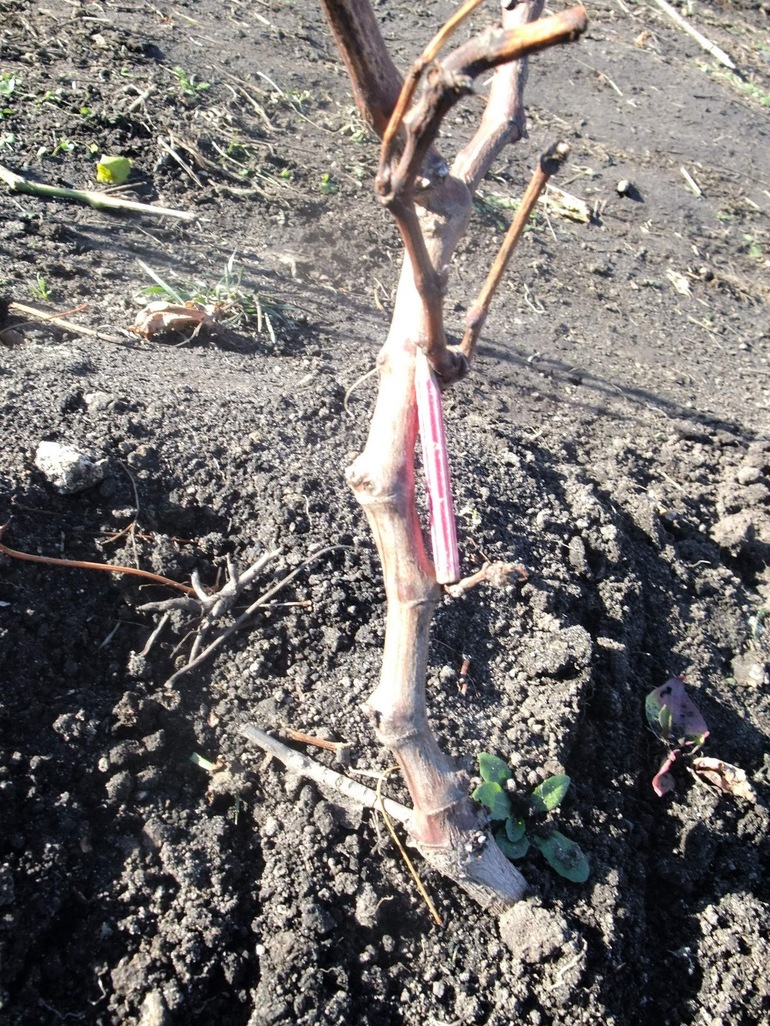
The annual vine usually grows up to 1 m, and under favorable conditions up to 1.5−2 m. At the same time, it lignifies, as a rule, by 6-8 eyes. If the shoot turned out to be completely green, and it had to be cut to ground level, this does not mean that the grapes died. Next year, the kidneys located underground will grow. They only wake up no sooner than the soil warms up. For the northern regions, it can be June and even July.
 You may be interested in:
You may be interested in:On two-year-old vines, you also need to leave two shoots, which next year will give a good bush with replacement knots, fruit vines and already formed sleeves.And if last year 4 buds were left on the last, then 6 should be kept in this (the two lower ones are removed in the spring). Excess shoots are cut off.
The three-year bush already has two full sleeves, on each of which a knot of substitution and the main vine are formed.
Disadvantages of the substitution method
An adult vine can grow up to 15 meters in length and climb a tall structure or tree. The application of the described method in this case becomes difficult. Rejuvenation of old bushes is carried out by pruning at the base in the place where the strongest young shoot grows from the sleeve. You can leave a new vine growing out of the ground. After 3-4 years, she will replace the old sleeve.Autumn pruning of grapes in the Moscow region by substitution method should be used only for covering varieties, since in the cold summer not all buds will have time to fully form and will not be viable the next year. For example, out of several eyes left on the vine, only two survived, one of which was too weak, and it was broken by the wind. In this case, it is necessary to completely remove the vine itself and the entire sleeve on which it grew.
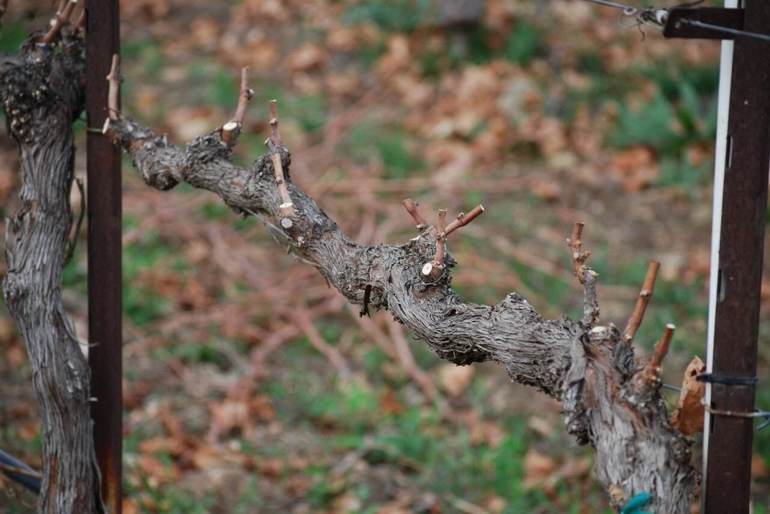
Shelter for the winter
All cultivated grape varieties in the first three years of life are subject to obligatory shelter, no matter how stable they are. The same applies to the most valuable and beloved bushes, the loss of which is undesirable. In order not to take risks, it is better to remove the vines from the trellis. Covered with snow, they are usually well preserved, but shoots above the snow line freeze. Two basic rules to keep in mind:
- fall is not shelter a vineyard too early, when it’s still warm;
- in spring - it’s too late to open when it’s already warm.
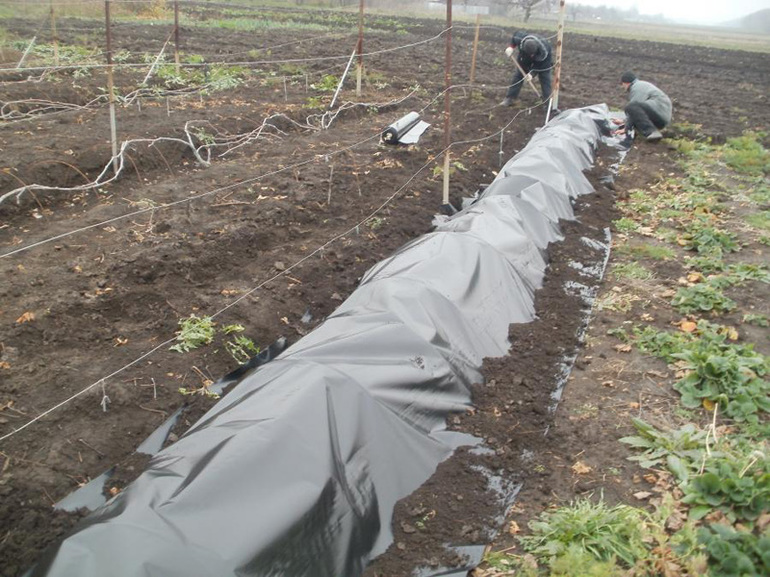
With the onset of cold weather, it is necessary to wait for the weather with light night frosts, since the plant needs to go through a hardening period. It is advisable to remove shelter in the spring at a time when the average daily spring temperature approaches zero. In order to easily remove the grapes from the trellis and lay them on the ground, it is better to place the seedlings not vertically, but slightly at an angle. Form bushes in the form of a low half-fan.
Shelter methods may vary. It depends on the climatic features of a particular region.. The most popular among gardeners are:
- shelter by the earth;
- dry shelter.
Preparing for severe colds
The easiest way to shelter is digging. It is used in young one-year-old vineyards and is more reliable for the northern and central regions. The technology is simple:
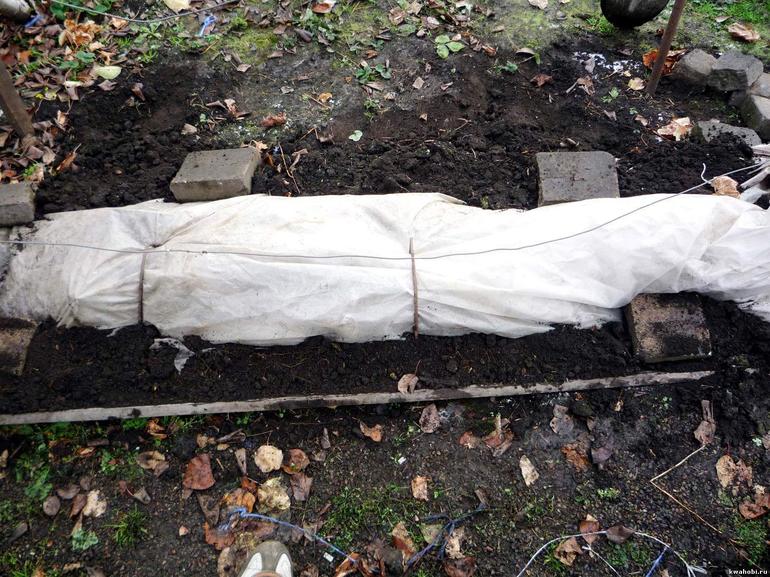
- straw (better than last year), hay, fallen leaves with a layer of 5-7 cm are covered up at the bottom of the groove with a depth of 15-20 cm;
- the vine is stacked;
- again a layer of the same materials;
- sprinkled with earth (15-20 cm).
The method has its drawbacks. Under certain conditions, the branch may lock up, which provokes the appearance of foci of decay. In such places, bears and other insects like to winter.
Simple and convenient
Dry shelter is done using a film, nylon bags, agrofibre. In this case, it is not necessary to dig small ditches, and the vine is laid directly on the prepared soil under the bushes and shifted by leaves, straw or tops with a layer of 25-30 cm. The main material is fixed on top. For fixing, wooden or iron staples, stones are used.
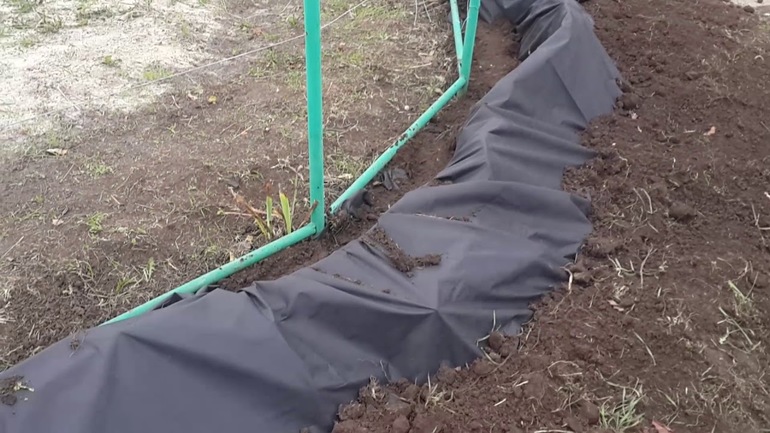
You can do without the use of organics: bend the bushes, put on top the synthetic winterizer, used when sewing clothes, then film and fix. It is very fast and convenient. When the grapes are opened in spring, the synthetic winterizer is wet, and the vine is dry. The material, like a sponge, absorbs excess moisture. Plants under it do not vypryvat and do not freeze. In addition, it will last more than one year, since it does not rot and does not collapse in the sun.
When choosing, you need to take into account the microclimate of the site itself and the fact that bushes of the same variety, even in the same region, can behave differently. It makes sense to shelter at least one shoot of perennial and time-tested bushes for the winter. It is quite possible that this will help to keep the vine, because winters are different, and the plant does not always enter this period in perfect condition.
Fertilizer vines
Autumn grape care includes fertilizer application. Any, even the richest soil over time is depleted and can not give the plant the necessary nutrients. Like any culture, for good health and productivity at different stages of vegetation, the vine requires a certain set of elements. To detect their deficiency in the soil, it is most reasonable to do its chemical analysis and determine the acidity. Based on the results obtained, it is possible to adjust its properties.
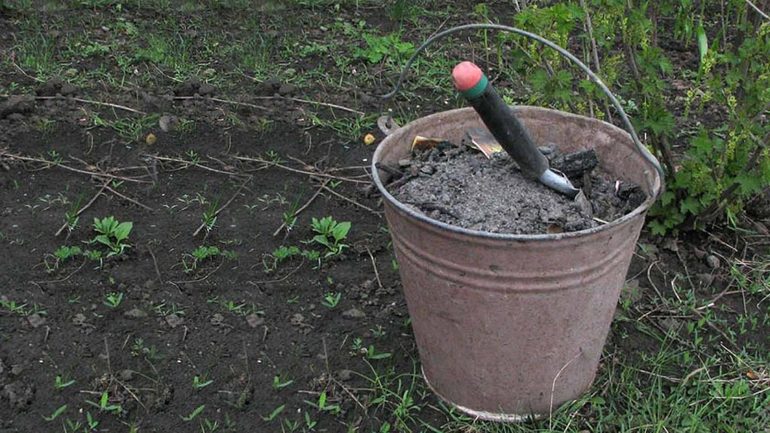
The modern chemical industry offers a large number of various fertilizers and additives. From them you can choose the ones you need in accordance with the needs and material capabilities. For example, phosphorus-potassium mixtures are most suitable for preparing the garden for the next season.
Their composition allows to enrich the soil and saturate it with the substances necessary to strengthen the plant before wintering, as well as the full development and fruiting of grapes in the next season. They are laid directly into the soil to a shallow depth. As a rule, this is the level of small roots.
But many gardeners prefer natural fertilizers in accordance with the principles of organic farming. You will have to tinker with the preparation of such top dressings, but they have undeniable advantages. These include:
- manure;
- compost;
- sludge;
- bird droppings;
- peat;
- sawdust and bark.
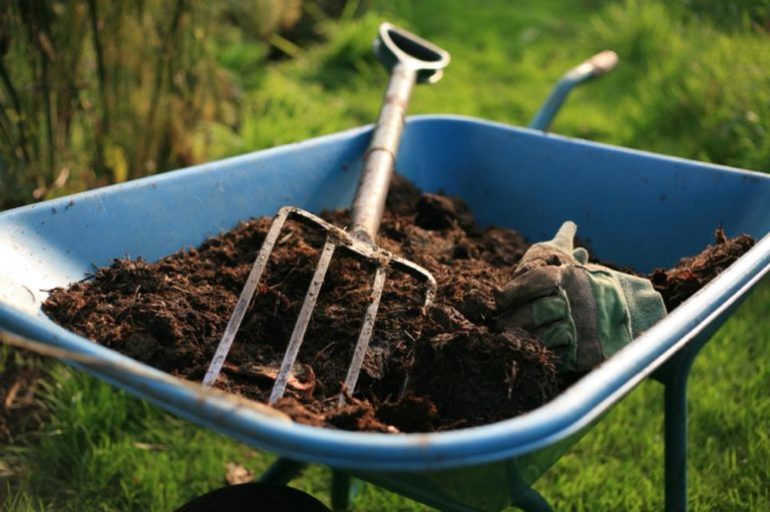
For autumn top dressing of grapes, as a rule, manure is used. Horse riding is considered the best. It is important to remember that it cannot be used in its pure form. Manure should overheat to a state of humus. In order for the fertilizer not to go away with rain and meltwater, it is laid in a shallow ditch dug around a bush or along a trellis. Such top dressing, carried out once every 3 years, will improve the structure of the soil and fill it with nutrients.
Care for grapes in autumn and preparation for winter is a necessary condition for maintaining a full-fledged vine in the cold season. Moreover, carrying out this work will ensure the health of the vineyard and a plentiful quality crop in the next season.




 Non-covering winter-hardy grape varieties for Moscow region
Non-covering winter-hardy grape varieties for Moscow region How to keep the vine in winter
How to keep the vine in winter When can I transfer grapes to another place in the fall
When can I transfer grapes to another place in the fall How to cover and prepare grapes for the winter in the suburbs
How to cover and prepare grapes for the winter in the suburbs